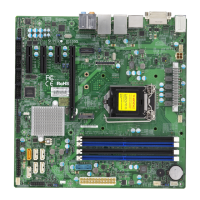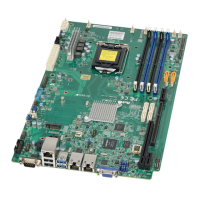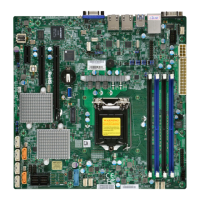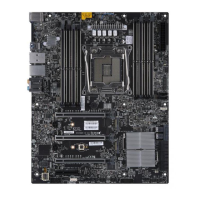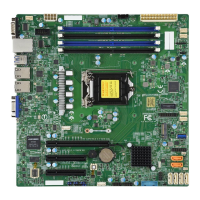20
X11SSH-F/-LN4F User Manual
In addition to enabling operating system-directed power management, ACPI also provides a
generic system event mechanism for Plug and Play, and an operating system-independent
interface for conguration control. ACPI leverages the Plug and Play BIOS data structures,
while providing a processor architecture-independent implementation that is compatible with
Windows 7, Windows 8, and Windows 2012 Operating Systems.
1.6 Power Supply
As with all computer products, a stable power source is necessary for proper and reliable
operation. It is even more important for processors that have high CPU clock rates.
The X11SSH-F/-LN4F motherboard accommodates 24-pin ATX power supplies. Although
most power supplies generally meet the specications required by the CPU, some are
inadequate. In addition, One 12V 8-pin power connection is also required to ensure adequate
power supply to the system.
Warning: To avoid damaging the power supply or the motherboard, be sure to use a
power supply that contains a 24-pin and an 8-pin power connector. Be sure to connect
the power supplies to the 24-pin power connector (JPWR1), and the 8-pin power con-
nector (JPWR2) on the motherboard. Failure in doing so may void the manufacturer
warranty on your power supply and motherboard.
It is strongly recommended that you use a high quality power supply that meets ATX power
supply Specication 2.02 or above. It must also be SSI compliant. (For more information,
please refer to the website at http://www.ssiforum.org/). Additionally, in areas where noisy
power transmission is present, you may choose to install a line lter to shield the computer
from noise. It is recommended that you also install a power surge protector to help avoid
problems caused by power surges.
1.7 Serial Port
The X11SSH-F/-LN4F motherboard supports two serial communication connections. COM
Ports 1 and 2 can be used for input/output. The UART provides legacy speeds with a baud
rate of up to 115.2 Kbps as well as an advanced speed with baud rates of 250 K, 500 K, or
1 Mb/s, which support high-speed serial communication devices.115.2 Kbps as well as an
advanced speed with baud rates of 250 K, 500 K, or 1 Mb/s, which support higher speed
modems.
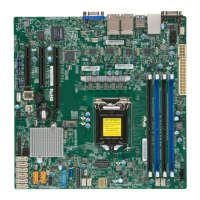
